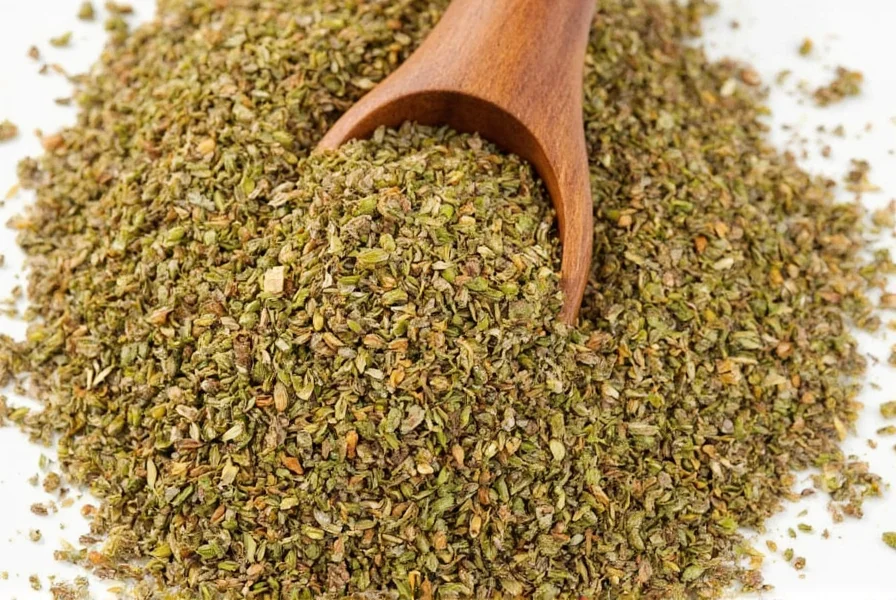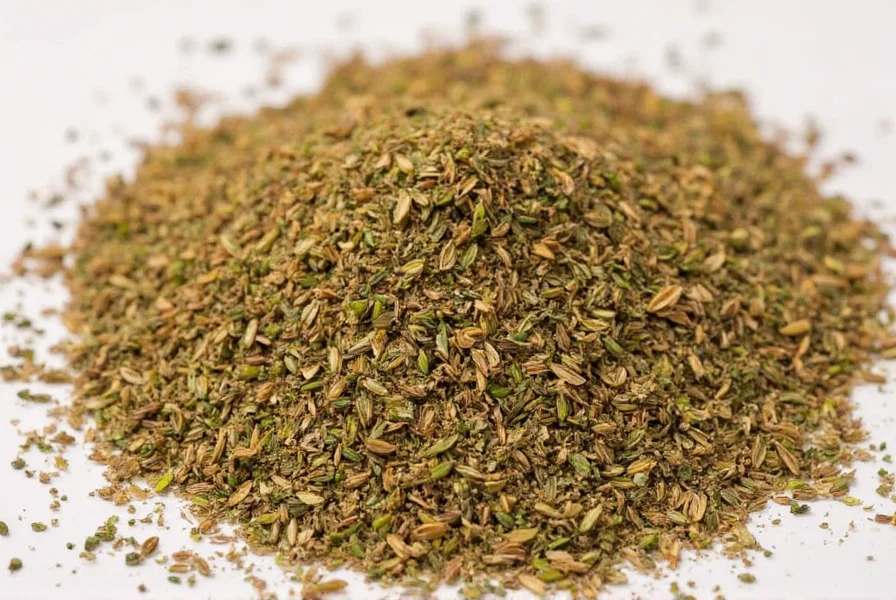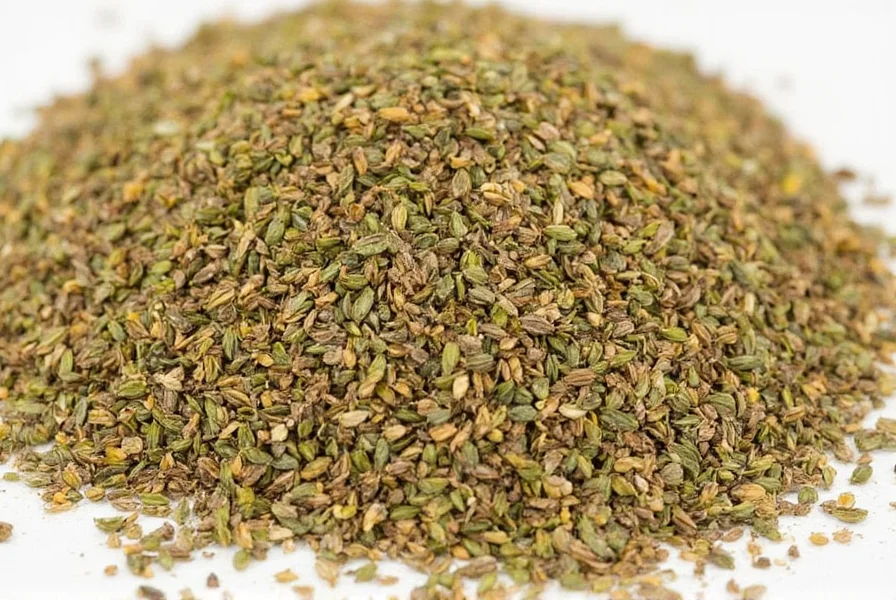Dried coriander, often confused with fresh cilantro (which comes from the same plant), represents one of the world's oldest known spices with documented use dating back to 5000 BCE. While fresh coriander refers to the leafy green part of the Coriandrum sativum plant, dried coriander specifically denotes the mature seeds that have been harvested, dried, and often ground. This distinction is crucial for home cooks and professional chefs alike, as the two forms deliver dramatically different flavor profiles and culinary applications.
Understanding Dried Coriander: Seeds vs. Leaves
Many people mistakenly believe dried coriander and cilantro are interchangeable, but they're fundamentally different components of the same plant. The confusion stems from regional naming differences—"coriander" refers to both the plant and its seeds in most of the world, while in North America, "cilantro" describes the leaves and "coriander" refers to the seeds.
Dried coriander seeds contain essential oils that develop complex flavor compounds when dried and ground. The drying process transforms the mild, green flavor of fresh seeds into the warm, lemony, slightly peppery taste characteristic of dried coriander. This transformation makes dried coriander a staple in spice cabinets worldwide, particularly in Indian, Middle Eastern, and Mediterranean cuisines.

Dried Coriander vs Fresh Coriander: Key Differences
Understanding the distinction between dried and fresh coriander is essential for proper recipe execution. Consider these critical differences:
| Characteristic | Dried Coriander | Fresh Coriander (Cilantro) |
|---|---|---|
| Source | Mature seeds of Coriandrum sativum | Leaves and stems of Coriandrum sativum |
| Flavor Profile | Warm, citrusy, nutty, slightly peppery | Bright, grassy, lemony with soapy notes for some |
| Best Used In | Dry rubs, spice blends, curries, baked goods | Garnishes, salsas, fresh sauces, salads |
| Shelf Life | 6-12 months when properly stored | 3-7 days refrigerated |
| Heat Application | Add early in cooking to release flavors | Add at end of cooking or as garnish |
Optimal Culinary Applications for Dried Coriander
Dried coriander shines in specific cooking techniques and dishes where its warm, earthy notes can fully develop. Unlike fresh cilantro, which loses its delicate flavor with prolonged heat, dried coriander benefits from being added early in the cooking process. This allows its essential oils to bloom and integrate with other ingredients.
Professional chefs recommend toasting whole dried coriander seeds in a dry skillet over medium heat for 1-2 minutes before grinding. This simple technique dramatically enhances the spice's natural citrus notes while developing subtle nutty undertones. The toasting process activates the volatile oils, creating a more complex flavor profile that elevates everything from Indian curries to Middle Eastern spice blends.
When incorporating dried coriander into liquid-based dishes like soups or stews, add it during the first 15 minutes of cooking. This timing allows the spice to fully hydrate and release its flavor compounds without becoming bitter from overexposure to heat. For dry rubs and marinades, combine dried coriander with complementary spices like cumin, turmeric, and paprika for balanced flavor development.
Dried Coriander Substitution Guide
Understanding proper substitution ratios prevents recipe disasters when you're missing dried coriander. The dried coriander substitution ratio differs significantly from fresh due to concentration differences:
- Dried to Fresh Conversion: 1 teaspoon dried coriander = 1 tablespoon fresh coriander leaves (but note these are different plant parts with distinct flavors)
- Whole Seeds to Ground: 1 teaspoon whole coriander seeds = ¾ teaspoon ground coriander
- When substituting for fresh cilantro: Dried coriander doesn't replace fresh cilantro well due to flavor differences—consider parsley or fresh dill instead
For authentic Indian cuisine applications, never substitute dried coriander with fresh cilantro. Traditional recipes rely on the specific flavor compounds developed during the drying process. In Middle Eastern cooking, dried coriander often appears in za'atar blends and baharat spice mixes, where its warm notes complement sumac and sesame seeds.
Proper Storage Techniques for Maximum Flavor
The best way to store dried coriander involves protecting it from four key enemies: light, heat, moisture, and oxygen. Whole coriander seeds maintain freshness significantly longer than pre-ground versions—up to 12 months compared to 6 months for ground coriander.
Store dried coriander in an airtight container made of dark glass or opaque material, kept in a cool, dark cupboard away from the stove or other heat sources. Avoid storing spices above the stove where temperature fluctuations degrade quality. For extended storage beyond six months, consider keeping whole coriander seeds in the freezer, where they'll maintain peak flavor for up to two years.

Never store dried coriander in the refrigerator, as moisture condensation during temperature changes introduces humidity that accelerates flavor loss. Check your dried coriander's freshness by rubbing a small amount between your fingers—if the aroma is weak or musty, it's time to replace your supply.
Nutritional Profile and Health Considerations
Dried coriander offers modest nutritional benefits beyond its flavor contributions. One teaspoon (2.1g) of ground coriander contains approximately:
- 9 calories
- 0.6g dietary fiber (2% of daily value)
- 7% of daily manganese needs
- Traces of iron, magnesium, and calcium
Research suggests coriander seeds may support digestive health and exhibit antioxidant properties, though these benefits require consumption in larger quantities than typical culinary use provides. Unlike fresh cilantro, dried coriander contains negligible vitamin K, making it suitable for those on blood-thinning medications concerned about vitamin K intake.
Common Mistakes to Avoid with Dried Coriander
Even experienced cooks make these dried coriander mistakes:
- Using stale spice: Old dried coriander loses its citrus notes, becoming flat and dusty-tasting
- Adding too late in cooking: Dried coriander needs time to hydrate and release flavors in liquid-based dishes
- Confusing with fresh cilantro: They're different plant parts with distinct flavor profiles
- Over-toasting seeds: Burnt coriander develops bitter, acrid notes that ruin dishes
- Storing in clear containers: Light exposure rapidly degrades flavor compounds
For optimal results in dried coriander in Indian cuisine applications, always toast whole seeds before grinding. This traditional technique maximizes the spice's complex flavor profile while ensuring even distribution throughout dishes. When making curry pastes, add ground coriander after other spices have bloomed in oil to prevent burning.
Conclusion
Dried coriander represents a versatile, globally beloved spice with unique flavor characteristics that differ significantly from fresh cilantro. Understanding its proper usage, storage, and substitution guidelines elevates everyday cooking while honoring culinary traditions from India to Morocco. By recognizing dried coriander's warm, citrusy notes and earthy depth, home cooks can transform simple ingredients into complex, restaurant-quality dishes. Remember that freshness matters—replace your dried coriander every 6-12 months for optimal flavor in all your culinary creations.
Frequently Asked Questions
Can I substitute dried coriander for fresh cilantro in recipes?
No, dried coriander and fresh cilantro are not interchangeable. Dried coriander comes from the seeds and has warm, citrusy, nutty notes, while fresh cilantro (leaves) offers bright, grassy flavors. Use 1 teaspoon dried coriander for spice-based dishes requiring depth, but substitute parsley or dill for fresh cilantro applications.
How long does dried coriander maintain its flavor?
Properly stored in an airtight container away from light and heat, whole dried coriander seeds maintain optimal flavor for 12 months, while ground coriander lasts 6 months. For extended freshness, store whole seeds in the freezer where they'll retain quality for up to 2 years.
Why does my dried coriander taste bitter?
Bitter dried coriander typically results from over-toasting seeds or using stale product. Toast whole seeds over medium heat for just 1-2 minutes until fragrant—any longer causes bitterness. Also check expiration; old coriander loses its citrus notes and develops unpleasant flavors. Always store in opaque containers away from heat sources.
What's the best way to use dried coriander in curry?
For authentic dried coriander in Indian cuisine applications, toast whole seeds first, then grind. Add during the tempering stage when blooming spices in oil, allowing 5-10 minutes for flavors to develop before adding liquids. Use 1-2 teaspoons per serving depending on desired intensity. Dried coriander works best when combined with complementary spices like cumin and turmeric.
Is dried coriander the same as coriander powder?
Dried coriander refers to the whole seeds in their dried state, while coriander powder is the ground form of those dried seeds. Whole dried coriander maintains freshness longer, but coriander powder offers convenience. For best flavor, grind whole dried coriander seeds yourself just before use rather than relying on pre-ground powder.











 浙公网安备
33010002000092号
浙公网安备
33010002000092号 浙B2-20120091-4
浙B2-20120091-4